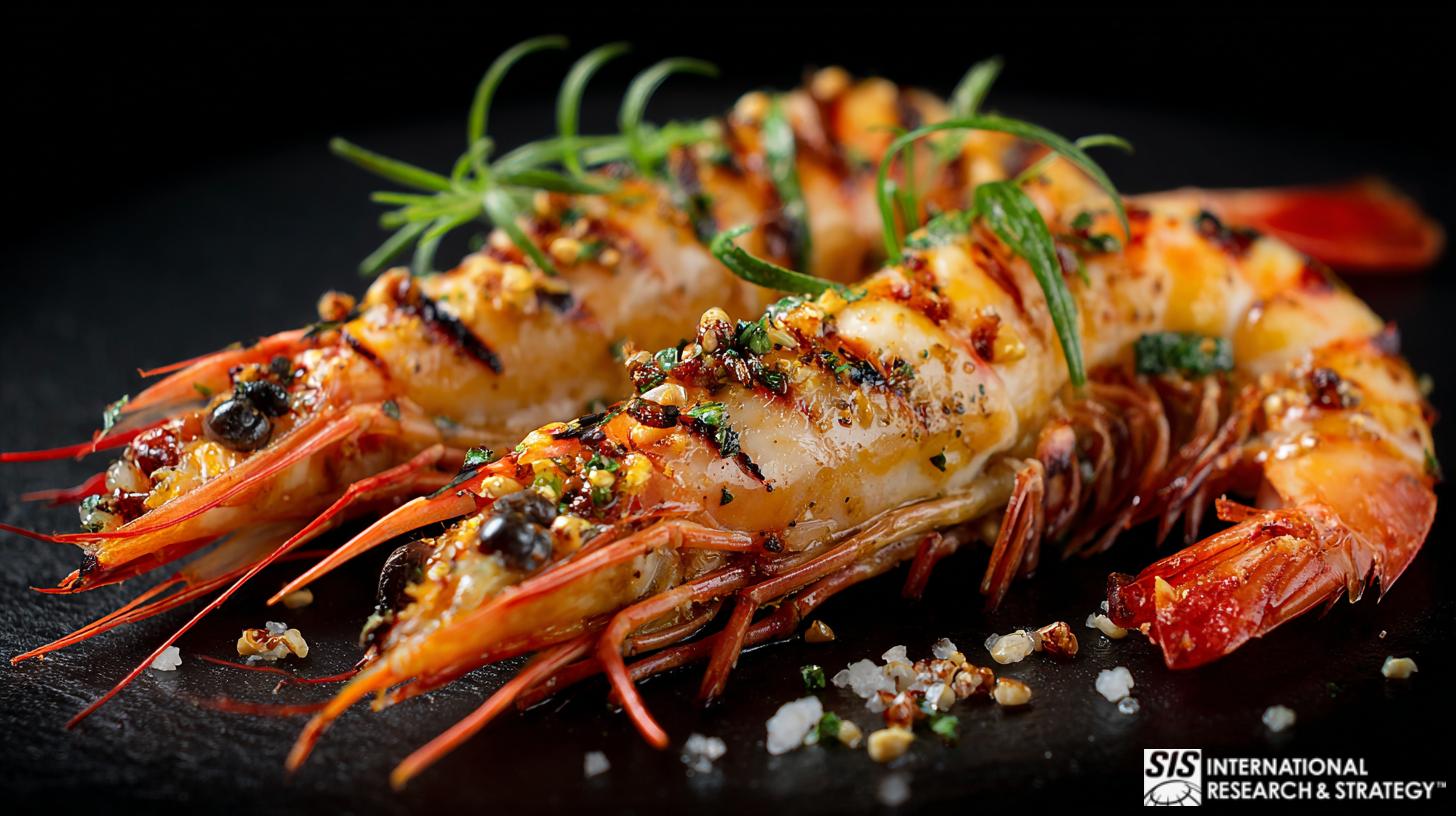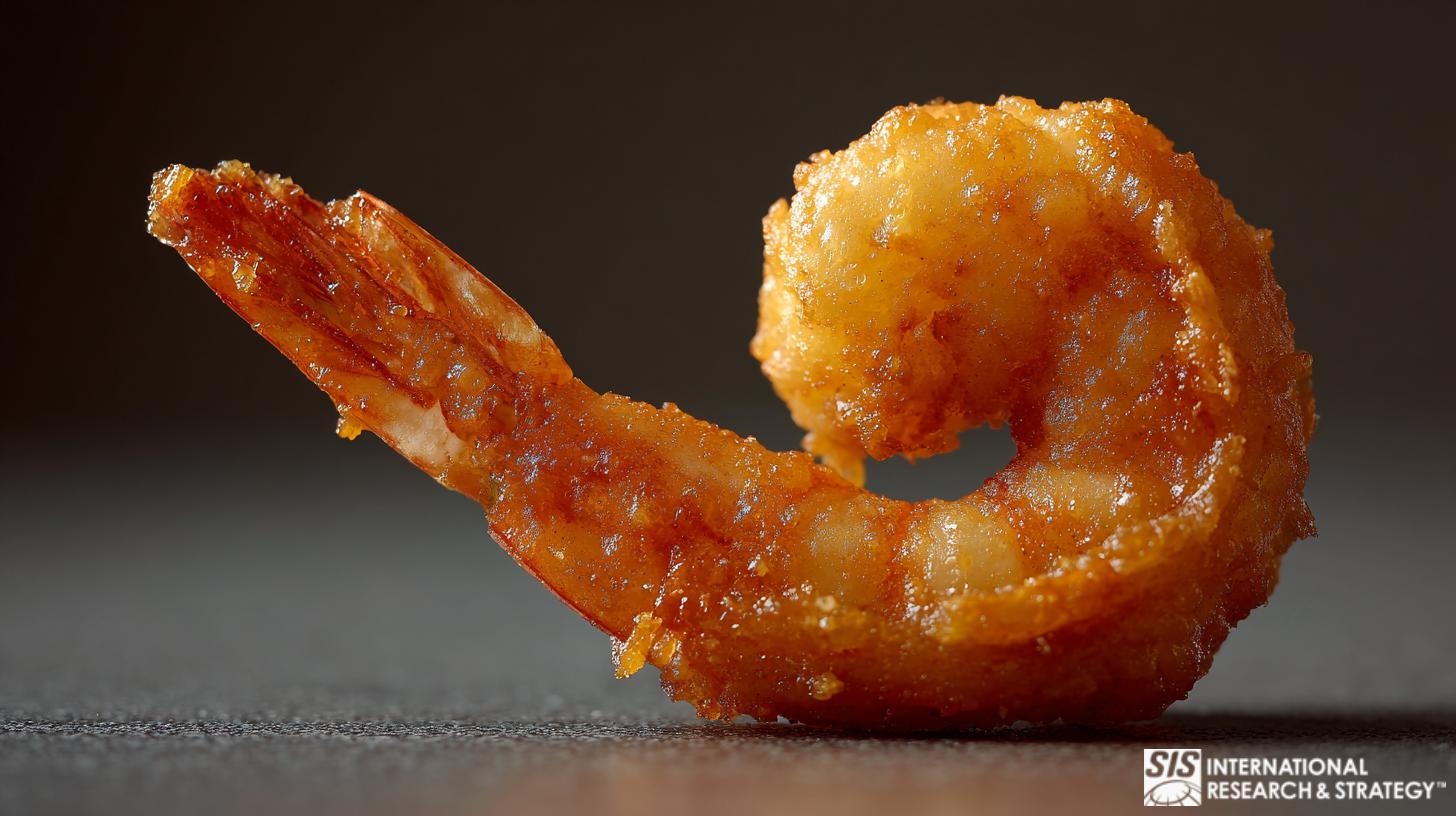Shrimp Market Research

Shrimp market research thoroughly examines the shrimp industry’s market demand and supply dynamics, consumer behavior, production and distribution systems, competitive landscape, and regulatory environment. The study aims to collect data and strategies in shrimp market research that will assist firms in making educated decisions about marketing, product development, pricing strategies, and overall business planning in the shrimp industry. This research can be carried out using a variety of methodologies, including surveys, interviews, and secondary source data analysis.
Market Overview
Shrimp is a famous shellfish in high demand worldwide due to its exquisite flavor and nutritional content. As a result, the shrimp market is a thriving industry that will continue to expand in the following years. Market research provides insights into factors driving the shrimp market include rising consumer health awareness, increased seafood demand, and expansion of aquaculture. The Asia-Pacific area leads the shrimp industry, with key producers and exporters including China, Thailand, and Indonesia. Other regions with significant market shares in the shrimp industry include North America and Europe.
Market Research Segments
Shrimp are categorized into numerous categories in the shrimp industry based on their size, species, and processing. Below are some of the most prevalent types of shrimp:
- Shrimp are categorized according to whether caught in freshwater or saltwater.
- Shrimp can be captured in the wild or cultivated on farms, and they are classed according to their manner of production.
- Depending on consumer preferences and market demand, shrimp can be offered with or without the head.
- Shrimp can be marketed raw or cooked and are typically processed and packaged differently depending on their method.
- Depending on consumer preferences and market demand, shrimp can be offered with or without the shell.
- Shrimp are also categorized according to their size, with jumbo shrimp being the largest and little shrimp being the smallest.
Market Drivers in The Shrimp Industry

Several factors influence supply and demand in the shrimp industry. Among the market drivers are:
- Health benefits – Shrimp is a low-calorie, high-protein snack with minerals like vitamin D, selenium, and omega-3 fatty acids. As a result, it is regarded as a nutritious food that appeals to health-conscious consumers.
- Increasing Demand – Demand is increasing. Population growth, growing income levels, and changing culinary tastes drive global demand for shrimp.
- Aquaculture Industry – Aquaculture is a growing sector. Shrimp output has increased as the aquaculture business has grown, making it more widely available and affordable to customers.
- Sustainability – The shrimp industry is becoming more environmentally friendly, with businesses using responsible sourcing, traceability, and waste minimization methods.
As the industry evolves, businesses must stay current on the latest trends and developments to remain competitive.
Conducting Shrimp Market Research
There are two approaches to gathering data and strategies in shrimp market research: quantitative and qualitative research methods.
Quantitative research is an organized and objective approach that analyzes trends, patterns, and relationships using statistical and numerical data. Surveys, polls, and statistical analysis are commonly used to measure and quantify customer behavior, opinions, and preferences. A quantitative research method, for example, can be used to evaluate the size of the shrimp market, define the target market segment, or assess customer satisfaction with shrimp items.
In contrast, qualitative research is a subjective and exploratory strategy that employs non-numerical data to gain insights and an understanding of customer behavior. Focus groups, interviews, and observation are common approaches for gathering detailed information about consumer perceptions, attitudes, and experiences. A qualitative research method, for example, can be used to investigate why customers prefer certain shrimp products, comprehend the cultural value of shrimp in a specific market, or identify the impediments to the acceptance of novel shrimp products.
To acquire a full insight into the market, both quantitative and qualitative research methodologies can be used when doing shrimp market research. A quantitative research approach, for example, can be used to gather numerical data on the size of the shrimp market, whilst a qualitative research method can be used to get insights into customer attitudes and preferences regarding shrimp products. Online surveys or market reports are further instances of quantitative research methods in shrimp market research, whereas focus groups or in-depth interviews with shrimp industry specialists are examples of qualitative research methods.
Benefits

Market research is an essential tool for businesses in the shrimp industry. Here are the reasons why any major player or those interested to be part of the shrimp market should conduct market research:
- Identify the market size and potential for growth. Shrimp market research may assist firms in understanding the market’s size, growth potential, and the key drivers driving or impeding growth.
- Recognize consumer behavior and preferences. Market research provides insights into consumer attitudes, behaviors, and preferences for shrimp goods, allowing firms to customize their offerings to fit the requirements and desires of their customers.
- Recognize and capitalize on market trends and opportunities. Businesses may remain ahead of their competitors and capitalize on new market niches by researching market trends and recognizing emerging possibilities.
- Examine market competitiveness. Market research may assist firms in understanding their competitors’ strengths, weaknesses, and plans, as well as designing effective marketing and branding strategies to differentiate themselves.
- Pricing and promotion techniques should be evaluated. Businesses can find the most effective pricing tactics and promotional activities to maximize revenue and profitability by researching pricing and promotion methods.
- Create innovative products and services. Market research provides insights into consumer requirements and preferences, allowing firms to develop new products and services that fit the changing needs of their customers.
- Determine distribution channels. Market research can assist firms in determining the most successful distribution methods for their products, such as online or physical stores, wholesalers, or direct-to-consumer channels.
- Make plans for future expansion. Businesses can plan for future growth, make educated investment decisions, and establish long-term strategic strategies by analyzing market dynamics and trends.
About Shrimp Market Research
Shrimp market research is the act of collecting and evaluating data and strategies in shrimp market research in order to get insights into market trends, customer behavior, and competition. Surveys, focus groups, and data analysis are examples of quantitative and qualitative research methodologies. Shrimp market research is done to assist businesses in making informed decisions based on trustworthy data, identifying new opportunities, and remaining competitive in the industry. Businesses may build efficient marketing and branding strategies, introduce new products and services, and plan for future growth by investing in shrimp market research.

